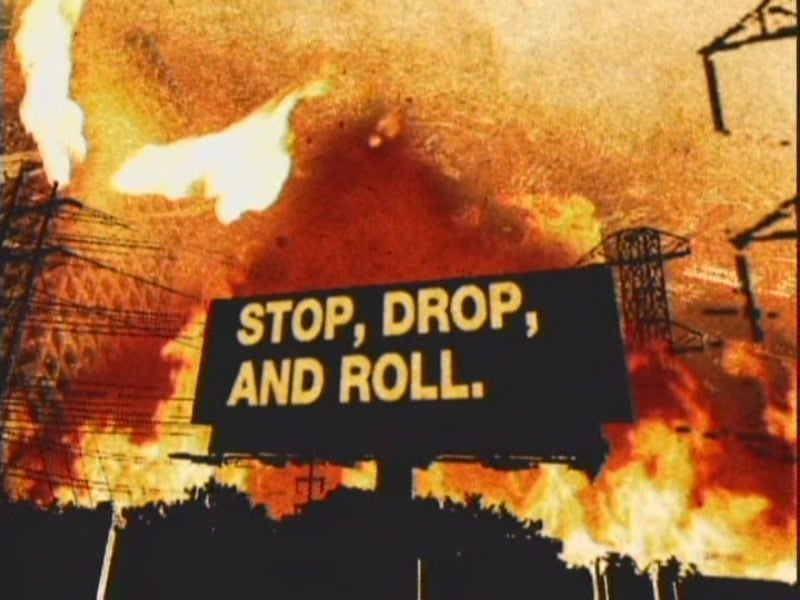Given the history of wildfires in California, someone has anti-survival traits.
Just give firefighting responsibility to the cops! Then they can show up to your kitchen fire, put it out, shoot your dog, and arrest you for complaining all in one trip!
From my understanding the water towers had completely ran out of water and pumps couldn’t keep up. There’s was no issue with volume through the existing water system, there’s just no way to contain a fire that big. They should be taking preventative measures such as raking the forest.
Where is Arial firefighting? https://en.m.wikipedia.org/wiki/Aerial_firefighting.
How come I can find videos of Russian be 200 everywhere, but I’ve never seen anything similar in US?
I’m confident US has no such planes ( or no good ones) or they are too expensive in US or some bullshit issues like imminent domain preventing them refilling in lakes nearby.
The fire grew this big due to high winds from the giant winter storm earlier in the week. Winds were too high to use planes/helicopters.
I’m confident US has no such planes
This is just peak ignorance. A quick search says the US has 200-300 firefighting planes and even lists 6 different varieties.
Can’t tell if this is idiocy or peak satire.
Well done.
Oh it’s even better than that. They’re referencing a direct quote from trump.
I was aware of that, but thank you for providing context!
I was not. Sounded reasonable except the raking part, from someone who knows fuck all about forest fires or building in fire prone areas.
I have to do other people’s jobs. Slap some tin foil on em and throw them in to help.
America: Funding cops to shoot black people, defunding actual helpful social needs since 1864.
Building houses without concrete and bricks and then located in the woods - what can go wrong.
What I don’t understand- most countries have fire fighting airplanes for these things.
How in a world US being a country with such a mighty economy - doesn’t have them or doesn’t want to use them. PatheticThe US absolutely does have those planes. (That’s 1 example, here are others) But high winds are keeping most of them from operating (the winds are what is spreading the fires).
They are using helicopters, but those can’t carry as much.
I don’t think you have any concept of the size of the burning area or the intense weather conditions in the western US. Months of drought conditions then 90mph wind gusts. Once a blaze is going it will jump all over the place due to the wind, making it virtually impossible to contain until the winds start to subside. Cleaning out underbrush can help, but with winds that high fires will jump directly from tree to tree. Some of these fires only took one spark to start. And the conditions will only grow more intense as climate change continues. This is not a problem that’s easy to solve.
California didn’t used to burn like this. Yeah, there were fires, but they were far more rare and didn’t affect as many people because the state wasn’t as populous and nowhere near as short of water.
As to your second statement, it’s bullshit. Wth the “mighty economy” statement has to do with anything. There’s a huge firefighting industry on the west coast and in California, both ground and air. They are using aircraft, even with a temporary stop due to high winds.
Can’t target properly with 100MPH winds
Bricks and mortar houses would burn, too under these circumstances.
This is incorrect.
the updated budget in November saw a $53 million increase over the previous year once the council took into account the department’s unappropriated balance calculation, which provides funds after the budget is approved.
https://abcnews.go.com/US/los-angeles-mayor-karen-bass-pushes-back-criticism/story?id=117512817
Careful. I also said this and my post was removed for misinformation. Looks like musks crew are invading.
Screenshotting this because I don’t know how to reliably link comments across instances.

"No they didn’t, it was only a budget cut until the unions fought them and forced them to hand over more budget’ isn’t exactly the win you think it is here.
Even worse, despite call numbers increasing over 5x from 1960, the fire program has been completely unable to expand since 1960 and was basically completely at the mercy of people doing brutal amounts of overtime to keep things going… until they lost the ability to pay them overtime too! The fire department is absurdly understaffed and underfunded. Imagine still making the same salary as 65 years ago, while having to do 5x the work!
While the 53 million budget increase the unions managed to grab is a good improvement, along with the ~200 more trainee firefighters it allowed them to hire but aren’t yet ready to deploy, it’s the definition of too little and too late.
High winds preventing firefighting planes and copters, low water levels since the city has let nestle steal all of it for free, electrical problems to prevent pumps from sending water from afar, and not enough man hours to manage and prevent fire conditions in the first place- as it says in the article you posted, no amount of budget could have prevented this, because there was more to play here than just the budget. But enough people and man hours to properly manage things would have done a lot to limit the scope of the disaster.
This has been debunked
Has it? Because LAFD had $17,553,814 reduced from its budget and LAPD had a $126 million increase in budget. Clearly some money moved around. Would love to see your source.
The new budget was increased over the previous year.
https://abcnews.go.com/US/los-angeles-mayor-karen-bass-pushes-back-criticism/story?id=117512817
lmao, what an argument for them to make. “It’s not a budget cut, the unions fought us, won, and made us hand over more money after we slashed their already hilarious low budget!”
Yeah, I don’t think taking $17m from $837m results in this. If anything, it might have something to do with those cat 1 hurricane level winds.
Based on my own experience, this is how most cities handle their PD/FD funding, unfortunately. The fire department is just not important… until it is.
Can confirm. source: Am Australian.
I suspect Scott being a doomsday death cult evangelical made those cuts deliberate instead of just being a standard short sighted git. Especially when he decided to take a vacation during your crises.
That’s not really how it works in Australia though.
Every property owner pays an Emergency Services Levy which pays for the fireys. State governments pay for the police force. So there’s no organisation that chooses whether police or fire gets whatever money - funding is procured separately.
That said, I take your point that the fireys don’t get a lot of attention until there’s a disaster. That’s just human nature I guess.
In my area, if there’s a bushfire that looks like destroying someone’s house, the volunteers, fire service, and bombing planes are on to it in minutes.
I don’t have “data” but from my anecdotal observations they don’t seem to be hamstrung by a lack of funding.
That’s karma. The longer we seek instant gratification, neglecting doing the hard, dirty necessary work that yields no immediate discernable benefits, the more severe the bite is, when it comes back around and bites us in the backside. As a collective, we stay on the wheel of suffering, figure out we need to do something differently, figure out necessary changes, then implement them… Then a few generations, the wealthy overlords convince us we’re spending too much on very sensible investments that yield no immediate discernable benefits and we repeat the cycle. It’s like Groundhog Day over centuries (which add up to millennia,), rather than days, weeks, years. Because they plan family fortunes for centuries, rather than days, weeks and years, because they can afford private communities, with private police and fire departments, and comprehensive health. The rest of us are means that justify their ends, and the sooner we, as a collective, wake up and smell the roses and love each other enough (which preserves our own arses) to figure out ways to fix this mess, for centuries that turn into millennia, the better off we and the rest of our ecoweb will be. Or not. 🤷♀️
They cut ~2% of the budget. Anyone spewing this funding cut bullshit is a partisan hack.
Quit being reactionary.
I suspect they could have doubled the budget and they still wouldn’t be able to control those fires.
Still it looks like it’s affecting rich people, so something will probably get done about it.
Why do you think it’s okay to cut funding to the fire department while keeping the police(gang) force that is notorious for not actually doing anything to help it’s citizens?
deleted by creator
it’s not even remotely close to half of the city burning down. But given the damage estimates are running somewhere around $150 billion, it’s bad enough
deleted by creator
Maybe if they all shoot the fire in the back when it’s sleeping?!
Meh, same thing with healthcare. Who needs a medical professional to help a person with a mental health crisis when you can have a guy with highschool and six months of “training” put a few bullets in em?

This is some pure bullshit right here. Never let a tragedy go to waste, gotta get those clicks. No amount of budget would have prepared the city for this. They would have needed literally 10x to contain the fires fast enough.
High winds prevented the use of air based equipment. The same winds drove burning embers for miles into absolutely bone dry foliage.
It’s been way to dry here for too long to do any controlled burns, so no way to effectively get rid of the fuel.The FD could always use more resources, but the extent of this fire has nothing to do with a lack of resources and much more to do with climate change.
You don’t understand wildland fire mitigation very much, do you. Every penny helps you troll. And by the way, I have my red card, and a minor in forest fire management.
Glad to hear from an expert on the situation , as someone who is in fire management there is a lot you can explain.
There are so much about this . What general resources that would have been needed to prevent the scale of the fires? If properly resourced how would the response have been significantly different? Of course each fire fighter counts, but what would the scale need to have been to change this event? What should people be focusing on when we demand better?
For example I heard the the first hours and days of the fires air assets could not be deployed because of the 60-80 mile hour winds. that was cited as a significant factor in the initial spread. though the source was just on the news so no idea how creditable
Are there types of air craft designed to fight fires in tropical storm like conditions?
Are fire like this seen coming by the city FD?
How are resources allocated when multiple fires rage?
In your opinion what cities are doing a good job with fire/disaster planning? What cities globally face similar challenges as Los Angles? Are there lessons than can be learned from those places?
To keep it short, it’s called mitigation. You “prevent” crazy fires by eliminating fuel sources. But remember, homes are fuel sources as well, often great fuel sources. I will let you do the math.
Since this is the topic of the day can you elaborate?
I’ve only study structure fire resistance as a home owner in a fire prone area. City run local group disaster prep as well as small out building construction ( garages and sheds , not residential structures or commercial ones)
controlled burns weren’t possible for the last year because of severe drought.
Most homes in la are built with ibc compliance. There are sticklers about it especially with new construction. They still allow class V buildings but ordnances usually require a non-combustion coating, such as harde cement board or stucco . I am not sure if all places require type V building to be class A in my experience that has been the case
Much of the homes burned like Alta Dena and the palisades were on the urban/wild interface. So basically back yards were forests bordering to the Santa Monica mountains.
What are the most effective fuel mitigation efforts that can be done in cases like LA where a literal forest runs though the center of the city?
What about on a more local level ?
Is it literally thousands of people raking the forests?
I mean, yes, but also fuck the cops and fund the fire department
So the lesson here is to get more slave labor to fight these fires?
The main problem is that the houses are made from wood and cardbord, and are placed in and/or surrounded by dry-as-a-fart forests and brushwork. Which is a stupid idea in an area that is known to regularly hve forest and brushwork fires. More now with global warming, which makes the plants even dryer.
LA has some some of the most pain in the ass building codes and inspectors. A permit is needed for just about damn everything specifically because of fire risks. Set backs and spacing are strongly enforced as well as the use of fire resistant materials. So even if the house were made of ‘cardboard’ they are wrapped in concrete siding or stucco.
The winds were 60-80 Miles per hour, blown in from the desert. This is a fire in the center of the city, not some remote urban wild interface.
Nonetheless, all the houses I have seen burning in the news were surrounded by dry trees and shrubs. And those houses burned as well as any other American cardboard houses. Somehow, I see no difference between them and houses with not as strict building codes. So either they only show homes that have been grandfathered in, or those building codes make no serious difference.
This is one of those situations where negatives can’t be proved. You are arguing since even code made homes have the possibility of still burning codes don’t make a difference. The loss of property has been great, but some of those homes were battered by wind driven ashes for quite a time before igniting. The loss of life while tragic is low given the extent of the fires.
As you noted there are no regulations in LA city proper about landscaping . That is likely to change in the future.
I saw more LA houses in the news, and again all what was left was the chimney. To me, it looks like houses there are just part of the fuel. But one cannot tell whether those houses were the ones that were grandfathered in. And if the new regulation is in power for just a few years, just keep in mind how many new houses with new standards have been built since then.
Unlike houses here in Europe, which are usually made of stone, bricks, or concrete. Our house has a reinforced concrete basement and floors, foam concrete insulating walls, and concrete tiles on the roof. While it would definitively see damages if placed into the middle of such a firestorm, it would resist way longer, and would not contribute to the fire. I’d say before our house would get damaged beyond the need to just clean and repaint it, everything combustible (vegetation, sheds, fences) around would be long gone.
Thanks for the perspective.
Any home you see with a chimney is very old for the affected burn areas. The area did not use to be a fire risk, but in the 70’s the air quality in the la basin was a concern so wood burning fire places were not allowed in new construction.
So any standing chimney would be 50 years old at the newest.
Although many went though forced retrofits, such as the elimination of wood shakes roofing and wooden shingle siding the homes still only conform to the building codes and material of a 1/2 century ago.
My understanding of the situation is the fires are currently burning the historic districts and grandfathered homes. The newer buildings have not been touched yet.
That is not true for the Palisades region and Malibu. Most of the homes there would have been newer and they had significant losses.
… You realize it’s in the middle of the winter, right? All greenery is going to be dry looking, you can’t just not have greenery at all.
Sure but climate change just isn’t sexy. “Hey everyone that problem we’ve been telling everyone about for decades has resulted in the predicted outcome, it’s pretty terrible.”
LAPD cops can shout and order the fires to freeze!
They could also shoot it if it does not obey!











